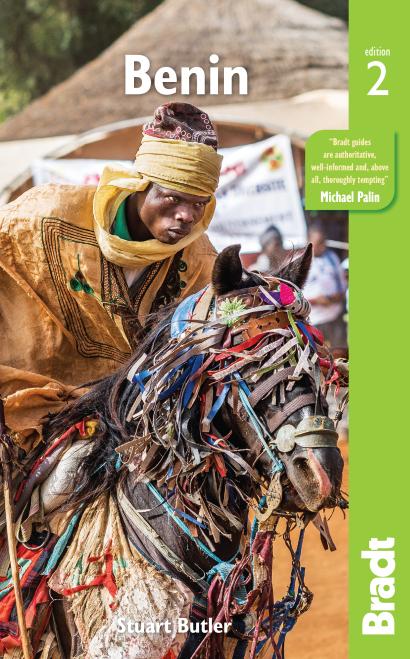The biggest religion of Benin, Voodoo has over 50 million believers in West Africa and further huge followings in parts of the Caribbean, South America and even some regions of the southern United States.
An animistic religion whose roots stretch back thousands of years, its name means ‘god’, ‘spirit’ or ‘power’ in the Fon language; and its followers believe not in the clichés of the living dead, but instead in the power of nature and the natural forces that course through everything.
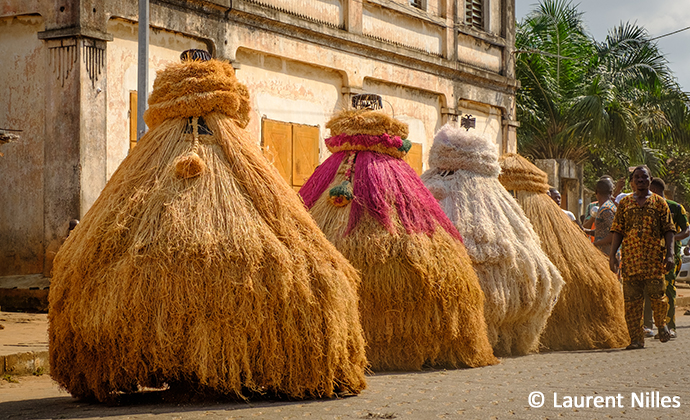
Fascinating as all of this is to read, what you really want to do is get out there and see it for yourself. But where are the best places to witness Voodoo culture in Benin? And how will you know what it is that you are actually witnessing?
We hope the following information will help in those tricky cases when you are trying to work out if it’s an Egungun or a Zangbeto bearing menacingly down on you. For more, see our guide to Benin.
Voodoo culture
Sacrifice
Sacrifices are all that most of us know of Voodoo and, yes, they are an everyday occurrence in Benin. Although you may look on them as nothing but an exciting picture opportunity they are in fact extremely important events, of vital symbolism.
The giving up of something valuable or precious is the surest way of catching a god’s ear. Chickens and goats are the most frequently sacrificed creatures, though you’ll see your fair share of cute puppies and kittens meet their makers as well. It might not, financially, seem like a lot to you or me, but for the vast majority of African village families a chicken is a significant sacrifice.
Trance
Alongside zombies and sacrifices the thing most of us immediately associate with Voodoo is people in a trance, eyes rolled back into their heads, speaking incomprehensible languages with their bodies possessed by spirits or gods. It certainly makes for an arresting sight; however, there is a lot more to it than that.
Trance is brought on in Voodoo ceremonies through the beat of drums and other musical instruments playing repetitively over and over again until finally the god or spirit is summoned and enters into a human body. Once he has occupied his human ‘shell’ it’s not at all unusual for the spirit to have a bit of fun with his new toy and make the body dance in a manic fashion for hours on end, or make it cut or injure itself.
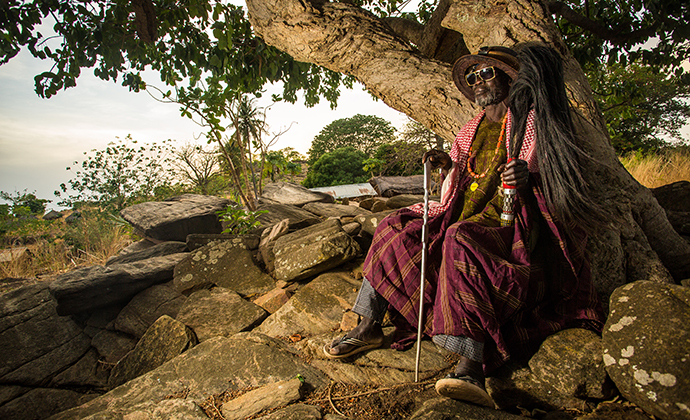
Experienced priests and village elders can slip in and out of trance barely noticed, and it’s often only their glazed or rolled-back eyes that give the game away. Even you, as a visiting foreigner, could fall into a trance and be possessed by the spirits, but as you won’t know how to deal with the situation it’s probably best to avoid the possibility.
Magic
For most people this is the most fascinating side of Voodoo or any other traditional African culture. Magic forms an enormous part of daily Beninese life and is likely to be your enduring memory of the country. At times you could be forgiven for thinking that everyone you meet is a magician, but this is no frivolous pulling-white-rabbits-out-of-hats type of magic.
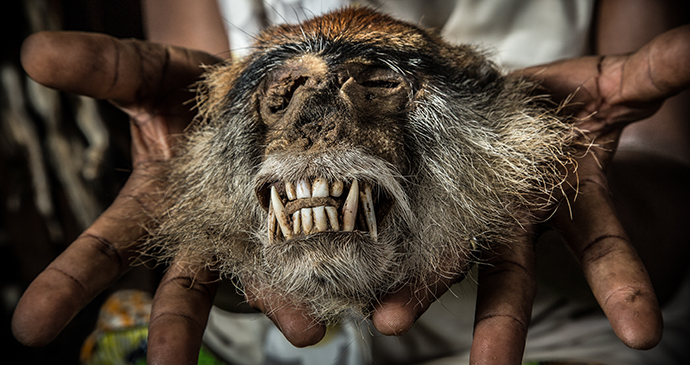
Instead Beninese magic is of religious significance and is also used for healing, although as the gods are requested to help in such operations it’s very much intertwined with religious beliefs. Maybe most importantly magic helps to explain those tricky patches between the known human world and the unknown and often bizarre world of ghosts and gods.
Because of this, most religious figures are in some way or another gifted with magical powers that can be used for both good and bad purposes. Magic is most commonly used as a way of communicating with spirits in order to ask for help in the protection or curing of a person. It is most visible in the amulets, charms and mangled-up animal parts of the fetish markets. It’s very likely that you will be offered the opportunity to purchase some kind of minor magic such as a charm.
Voodoo people
Priests
The priests of Voodoo are, like the priests of Christianity or the Mullahs of Islam, ritual leaders who oversee most religious matters and ceremonies. They can be men or women but men predominate. People become priests through either vocation or training – some are even called by the gods at birth.
Others have their future revealed to them by being possessed by a spirit, while some just go off to train into the job – this last applies especially to children, who are submitted to the guidance of an established priest and shown the ways of Voodoo. This can be a very difficult time for them as they live in isolation from their family and must speak only in the special language used by Voodoo initiates.
Egunguns
Egunguns are a type of Yoruba ancestor veneration and an Egungun is the most frequently seen spirit in Benin. Your chance of an encounter is quite high. Coming back from the realm of the dead as a ghost is one thing and (apparently) not that hard, but coming back in a physical form in which you can touch and talk to living humans is another thing altogether and only really likely if the spirit takes on the form of an Egungun.
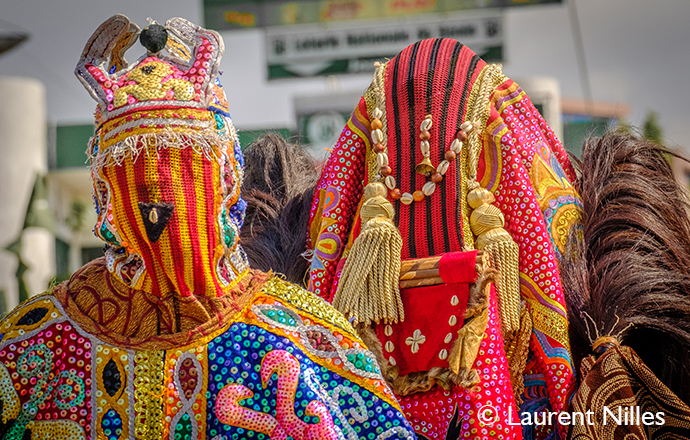
Not surprisingly, the whole experience of meeting an Egungun is a slightly spooky and stressful event for most foreigners and Beninese alike. Many people actually try to hide or run away from them, particularly as some Egunguns can become very violent – though if the Egungun has a message for you he will track you down whatever. The more violent Egunguns (called agbanon) can often be differentiated from the mellower ones (called weduto) by having some kind of impressive structure on their heads.
Whatever you do when you first see an Egungun, you must not rush over and start taking pictures – this is certain to land you in very deep trouble. Instead it’s safer just to tag along some distance behind the Egungun and wait, if you dare, for it to turn its attention to you. Even then you should go very carefully and seek the permission of everyone around you before attempting to take a picture.
Zangbetos
Almost as common as the Egunguns, and increasingly easy to see due to their habit of putting on public ‘performances’ during celebrations (or even paid-for tourist events), the Zangbetos, or Night Watchmen, act as an unofficial police force patrolling the streets and tracking down perpetrators of crimes whom they publicly denounce to the community.
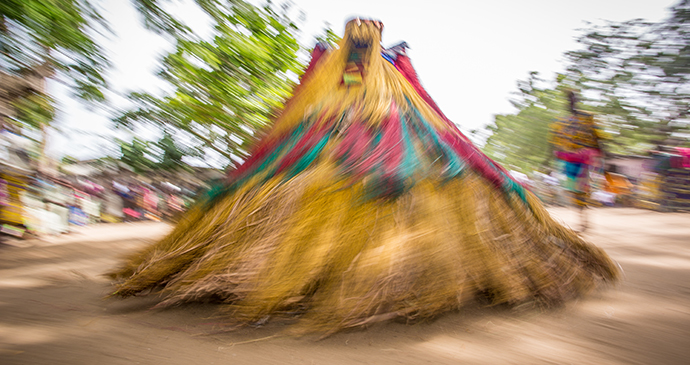
They also dispense justice, which for very serious crimes could in the past have involved the death sentence. Owing to the secrecy surrounding the Zangbeto societies it’s hard to know exactly what is inside a Zangbeto. Most people assume that there is simply a person in a trance within one and quite possibly that is often the case.
However, from personal experience I have seen Zangbetos a number of times and during their peak of dancing about like a spinning top they have either fallen over or, more commonly, been tipped over by their assistants to reveal a totally hollow interior with nobody inside them (and no way of anyone hiding within them) and, on the ground, just a small, moving wooden statue. These appear to come in all manner of shapes and forms: I have seen Zangbetos which are in miniature, or only knee-high, and another with a massive, moving, penis!
Witches
You will be pleased to know that witches are very common in Benin and you have a fairly good chance of meeting one. You will, however, be disappointed to learn that Beninese witches do not go in for the cliché of buzzing about on broomsticks very much. Though you may well meet one, it’s really best to try to avoid them, because witchcraft is considered one of the biggest forms of misfortune in Benin and witches are feared, loathed and respected.
So what exactly is a witch? Witchcraft is a state of possession, sometimes voluntary, by non-human forces that can cause much harm. All sorts of calamities are put down to witchcraft – disease, illness, crop failures, death and the inability to conceive a child are just some of the more common signs that a witch has been at work.
Where to go
Fête du Vaudou
The one time of the year when more than a handful of tourists are in Benin is during the Fête du Vaudou, which takes place on 10 January. Although celebrations now take place in many towns across southern Benin (Grand-Popo is another good bet), the main event is held in Ouidah.
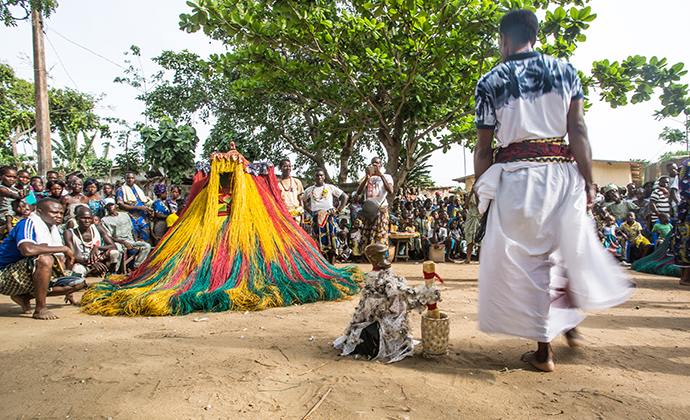
If you want to be sure of seeing some Voodoo ceremonies and celebrations, then this is a good time to be in Ouidah; however, don’t expect to be the only tourist on the prowl for local colour. Lots of tour groups are in town for the event and at the merest hint of something magical taking place, crowds of tourists and interested locals rush over to see what’s happening.
The official 10 January events are well organised and generally stick closely to the schedule, clustering mainly on the beach around the Gate of No Return. The more rewarding aspects of the festival, however, are the non-scripted, side events, as these are when more gritty and authentic Voodoo ceremonies are more likely to be seen. However, as is normal, finding these events is really a matter of chance (or good local contacts).
Temple des Pythons
As in many African and Asian cultures, snakes are an object of veneration as well as fear. In Voodoo the snake represents the god Da, Dan or Dangbe, who is the bringer of life and fertility and the favourite god of Ouidah. Rainbows are another symbol of Da and all over the temple you will see pictures of bright rainbows alongside snakes.
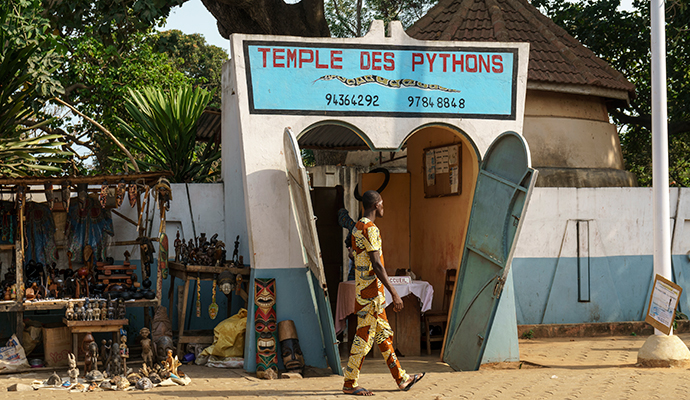
Though it’s all a bit of a tourist trap these days, it’s still a religious site and the snakes (harmless Royal Pythons) are used in the Voodoo ceremonies held here.
Abomey
Although known as a royal city, Abomey is a pleasant place to enjoy a day peering into the recesses of the market and discovering small Voodoo shrines squirreled away up dusty side streets. Those interested in Voodoo culture shouldn’t miss the fetish market, just a short way outside of the town centre – it’s one of the biggest and goriest in the country.
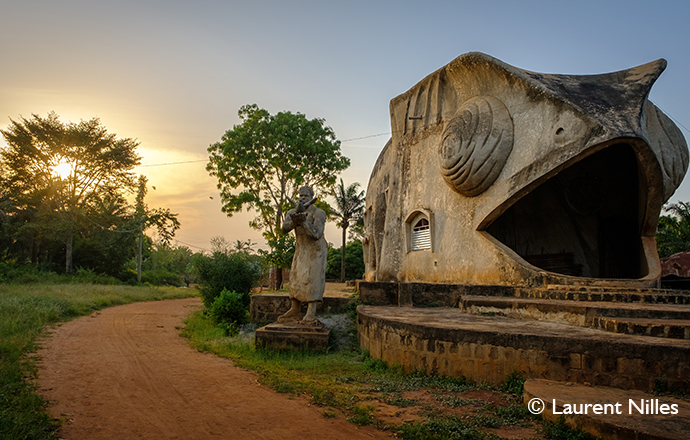
The amount of African wildlife parts on sale here is quite incredible. Monkey heads, dried pangolins, leopard skins and an aviary of shrivelled birds. You name it – it’s here. We even saw elephant skin, lion skulls and what might have been a small chimpanzee head.
Savalou
Savalou likes to claim that it is the beating heart of Voodoo in Benin and, as such, should almost be considered a compulsory stop on the road north. However, don’t get too excited about the thought of zombies roaming the streets and sorcerers stirring cauldrons. There are certainly a lot of religious and magical people in the neighbourhood, but it’s largely all kept hidden from prying eyes.
The one place that you can be certain of experiencing the blood and gore of Hollywood-style Voodoo is at the immensely strong Dankoli fetish, a few kilometres out of town. To the uninitiated this roadside shrine may just resemble a rotting, stinking pile of organic rubbish and blood, but don’t be fooled, for the Dankoli fetish is rumoured to be the strongest and most powerful fetish in the country.
The gods are so close here that you don’t even need a priest to act as a middleman between you and them. You simply speak directly with the spirits who will pass on your messages and requests. It’s said that anything you ask for will come true within a year.
More information
For more information, see Stuart Butler’s guide to Benin:
